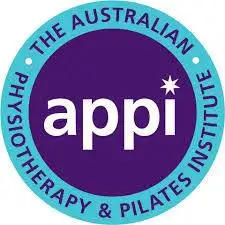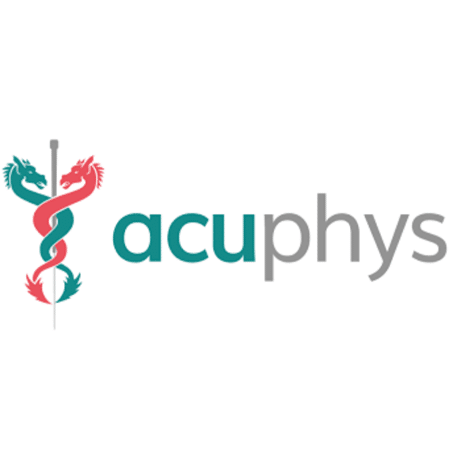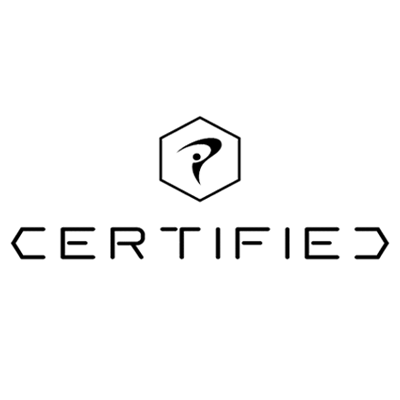Neck Pain
What is it?
Neck Pain (NP), just like low back pain is one of the most common conditions we treat here at JL PhysioFit.
Often it is the result of a build-up of pressure on the neck due to prolonged postures, stiffness and lack of strength and good quality exercise.
Left untreated, neck pain can really impact your day to day life.
How does it show up in your life?
You may struggle to work without pain in your neck or across your shoulders
Rotating the neck when driving is painful
Doing housework causes pain and discomfort
You may struggle to sleep due to pain
Looking up or down might be sore
You are always reaching for the next painkiller
Where you might feel pain?
Centrally in the neck or to one side
Referred pain down into the arm, shoulder blade or down your back
Referred pain up into your head
How it might feel?
Constant or intermittent pain (comes and goes).
Dull or aching
Sharp, shooting, stabbing or burning pain
Headaches
Why do I get Neck Pain?
Most episodes of Neck Pain come on due to a build-up of pressures that are placed on the structures of the neck (muscles, ligaments, joints, discs and nerves) over a prolonged period of time. Think about the example of sitting all day.
The body is incredibly resilient and will deal with the demands we place on it for long periods of time (months and years) with no problem, but eventually this pressure builds to be too much and we get a message (PAIN), telling us to do something about it.
Postural related neck pain is a great example of this. Typically, due to the way society and technology have developed, we have become a population that does a lot of sitting, which can put a lot of pressure on the neck (think about your head going forward when at the computer).
We wake up and sit at the table for breakfast, then we drive to work, where we sit at the desk for most of the day, before jumping in the car to drive home. We then sit at the table to eat, before retiring to the sofa to relax and finally going to bed where we most likely sleep on our side.
As you can see that’s a lot of sitting and bending forwards, and it is these prolonged postures that if we don’t do anything about, may end up causing pain.
We need to remember that our bodies are designed for movement. It is how we keep our muscles, joints, bones and mind both strong and healthy.
Common causes of Neck pain:
Joints
The joints of our back are amazing and allow us both stability (think about standing upright) and mobility (bending forwards, backwards, and rotating). In order for these joints to stay healthy and function well, they need to stay hydrated with nutrients, which they get through movement and a clever mechanism of pressure and release. This helps to draw the nutrients into the joint.
In order for these joints to stay healthy and function well, they need to be hydrated with nutrients and they get these through movement and a clever mechanism of pressure and release that helps to draw the nutrients into the joint.
When we sit for long periods, we just don’t get this, which can lead to joints becoming stiff, painful and inflamed.
Discs
We have discs that sit between each level of our spine and their role is to absorb and distribute load through the spine evenly to allow us to move efficiently. Think of them like a doughnut, only way stronger!
These discs have an inner centre that reacts in response to how we move. For example, if we look down at our feet, the inner centre of the disc moves backwards and then vice versa if we look up.
Over time, if we sustain postures such as sitting, the inner centre can begin to press on or break through the back wall of the disc, causing pain, inflammation and pressure on the nerve. Sometimes referred to as a slipped disc. When the nerve is irritated or compressed, we can experience pain in the back and down the leg, also known as sciatica.
Other Causes Of Neck Pain
How do we treat Neck Pain?
We use our 4-step system to assess and treat your neck pain as outlined below. This ensures you have the best possible chance of getting better and the problem not returning in future.
1) Assess
First we listen to you and take a detailed history of your neck pain. Then we assess your back, hips and lower legs using simple movement tests and screens.
We then explain your likely diagnosis and proposed treatment plan of exactly what we need to do to get you better.
2) Mobilise
Soft tissue massage and mobilisation
Joint mobilisation
Acupuncture and Dry Needling
Muscle Energy Techniques
Taping
Advice around lifestyle, posture and ergonomics.
3) Strengthen
Once pain has begun to settle and we are moving in the right direction, the emphasis shifts to helping you build the necessary strength and resilience of muscles and joints in order to get those long-lasting results. We work with you 1:1 in our dedicated rehab space and/or start you in our group PhysioFit Pilates classes.
4) Optimise
Note: Most people don’t need scans but if during the assessment or subsequent treatment sessions we decide your condition does need further investigation like an X-ray or MRI, we have the facilities to refer you privately if you wish. Usually, we can get this organised and have a result within 3-5 days.
How do I get started?
Like to speak to someone first?
No problem, please call the main desk and if needed we can have a physio call you back to discuss your specific situation.
Testimonials
What Our Clients Say
 Paul Scrafton2023-09-21Physio linked to additional stretches/exercises and Pilates at JL Physiofit have improved my core strength and flexibility.
Paul Scrafton2023-09-21Physio linked to additional stretches/exercises and Pilates at JL Physiofit have improved my core strength and flexibility. Rebecca Lowes2023-09-18Michael helped me with leg pain leading up to my first half marathon. I ended up running the whole distance with no pain and was able to enjoy the experience by taking his advice and getting treatment the week before the big run. Would recommend to anyone.
Rebecca Lowes2023-09-18Michael helped me with leg pain leading up to my first half marathon. I ended up running the whole distance with no pain and was able to enjoy the experience by taking his advice and getting treatment the week before the big run. Would recommend to anyone. Neil Taylor2023-09-15Hi , i have had individual physiotherapy by Bev for my back and feet (plantar fascia )and have subsequently been able to join a beginners Pilate class run by Bev . The class is demanding , enjoyable and appropriate to my physical capability.
Neil Taylor2023-09-15Hi , i have had individual physiotherapy by Bev for my back and feet (plantar fascia )and have subsequently been able to join a beginners Pilate class run by Bev . The class is demanding , enjoyable and appropriate to my physical capability. Alison Bailey2023-09-15I thoroughly enjoyed my Pilates class this morning. I found my teacher to be very thorough, aware of each pupils ability and very encouraging. Highly recommended. Thank you .
Alison Bailey2023-09-15I thoroughly enjoyed my Pilates class this morning. I found my teacher to be very thorough, aware of each pupils ability and very encouraging. Highly recommended. Thank you . Sharon Oldroyd2023-09-15Started treatment in September 2022 after hospital appointments with consultant and scans on my left knee. I booked to see Michael as I was having major pain/grinding noise and unable to do exercise or even walk up/down the stairs properly. He assessed my mobility and strength and developed a tailored, gradual rehab program that has helped me to build strength and confidence in my knee as well as helping me slowly get back into exercising. It's made a vast difference working with Michael as I'm not an easy person to work with and always push myself too far. All my exercises were shared via email and accessible via an app. Now I'm exercising 5 times a week, spinning, strength, cardio, HIIT, rowing and running (I can finally use my home gym). Thank you for your patience and understanding my needs. Would highly recommend Michael and JL PhysioFit.
Sharon Oldroyd2023-09-15Started treatment in September 2022 after hospital appointments with consultant and scans on my left knee. I booked to see Michael as I was having major pain/grinding noise and unable to do exercise or even walk up/down the stairs properly. He assessed my mobility and strength and developed a tailored, gradual rehab program that has helped me to build strength and confidence in my knee as well as helping me slowly get back into exercising. It's made a vast difference working with Michael as I'm not an easy person to work with and always push myself too far. All my exercises were shared via email and accessible via an app. Now I'm exercising 5 times a week, spinning, strength, cardio, HIIT, rowing and running (I can finally use my home gym). Thank you for your patience and understanding my needs. Would highly recommend Michael and JL PhysioFit. Diana Robertson2023-08-26I am really enjoying beginners Pilates and feel like I have made good progress. The trainers are very good and it is a positive low-key atmosphere and everyone is friendly and welcoming.
Diana Robertson2023-08-26I am really enjoying beginners Pilates and feel like I have made good progress. The trainers are very good and it is a positive low-key atmosphere and everyone is friendly and welcoming. Julie Tough2023-08-24Enjoying this physio type class, definitely feeling the benefit.
Julie Tough2023-08-24Enjoying this physio type class, definitely feeling the benefit. Moira Luccock2023-08-23Good class today with Michael. Well taught by Michael with options to suit our abilities. Stretching so feel I have progressed. Light hearted banter too - what more could you want! Moira
Moira Luccock2023-08-23Good class today with Michael. Well taught by Michael with options to suit our abilities. Stretching so feel I have progressed. Light hearted banter too - what more could you want! Moira Lesley Hughes2023-08-22Good team that listen to what clients have to say before doing each Pilates class, so if you have a niggle they work with it. Exercises are testing but doable, even if at the time you are not sure about it, and if you can't then they come up with a variation for you to do. Friendly classes and staff.
Lesley Hughes2023-08-22Good team that listen to what clients have to say before doing each Pilates class, so if you have a niggle they work with it. Exercises are testing but doable, even if at the time you are not sure about it, and if you can't then they come up with a variation for you to do. Friendly classes and staff. Nick Winslow2023-08-17I attend pilates regularly and cannot overstate how much I value the advice ,motivation,and fun this provides.There is a real rewarding sense of progression.JL himself is my usual instructor ,but the entire team have an infectious enthusiasm that fosters self improvement.Google rating score: 5.0 of 5, based on 149 reviews
Nick Winslow2023-08-17I attend pilates regularly and cannot overstate how much I value the advice ,motivation,and fun this provides.There is a real rewarding sense of progression.JL himself is my usual instructor ,but the entire team have an infectious enthusiasm that fosters self improvement.Google rating score: 5.0 of 5, based on 149 reviews





